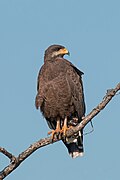Reconstruction:Proto-Turkic/keleŕ
Hello, you have come here looking for the meaning of the word Reconstruction:Proto-Turkic/keleŕ. In DICTIOUS you will not only get to know all the dictionary meanings for the word Reconstruction:Proto-Turkic/keleŕ, but we will also tell you about its etymology, its characteristics and you will know how to say Reconstruction:Proto-Turkic/keleŕ in singular and plural. Everything you need to know about the word Reconstruction:Proto-Turkic/keleŕ you have here. The definition of the word Reconstruction:Proto-Turkic/keleŕ will help you to be more precise and correct when speaking or writing your texts. Knowing the definition ofReconstruction:Proto-Turkic/keleŕ, as well as those of other words, enriches your vocabulary and provides you with more and better linguistic resources.
Proto-Turkic
Etymology
According to Bonnman and Fries, borrowed from Proto-Yeniseian *kʷetʳ-ja (“frog, lizard”) around the time of the Xiōngnú Confederacy, from an Arinic language, for which compare Arin kere (“frog”).
In light of Cypriot Turkish kelte, Tatar кәлтә (kältä) and Chuvash калта (kalt̬a), some suggest a hypothetical *kel- root, however it is a loanword from Persian کلته (“lame”). (See Tatar кәлтә елан (kältä yelan, “lizard (lit. short snake)”) and Turkish kertenkele (“lizard (lit. short lizard)”))
Noun
*keleŕ
Declension
| singular 3) | |
|---|---|
| nominative | *keleŕ |
| accusative | *keleŕig, *keleŕni1) |
| genitive | *keleŕniŋ |
| dative | *keleŕke |
| locative | *keleŕte |
| ablative | *keleŕten |
| allative | *keleŕgerü |
| instrumental 2) | *keleŕin |
| equative 2) | *keleŕče |
| similative 2) | *keleŕleyü |
| comitative 2) | *keleŕligü |
1) Originally used only in pronominal declension.
2) The original instrumental, equative, similative, and comitative cases have fallen into disuse in many modern Turkic languages.
3) Plurality in Proto-Turkic is disputed. See also the notes on the Proto-Turkic/Locative-ablative case and plurality page on Wikibooks.
2) The original instrumental, equative, similative, and comitative cases have fallen into disuse in many modern Turkic languages.
3) Plurality in Proto-Turkic is disputed. See also the notes on the Proto-Turkic/Locative-ablative case and plurality page on Wikibooks.
Descendants
- Oghuz:
- West Oghuz:
- Old Anatolian Turkish: كلر (keler)
- ⇒ Old Anatolian Turkish: كلته كلر (kelte keler), كرتكنه (kertekene), كلتن كلر (kelten keler)
- Azerbaijani: kərtənkələ
- Gagauz: kistenkelä
- Ottoman Turkish: كرتنكلر (kertenkeler), كرتنكله (kertenkele)
- Turkish: kertenkele
- West Oghuz:
- Kipchak:
- Karluk:
- Karakhanid: كَلَرْ (keler, “lizard”)
- Chagatai: کلاس (keläs)
- Uzbek: kaltakesak
- Uyghur: كېلەر (këler), كىلە (kile)
- Chagatai: کلاس (keläs)
- Karakhanid: كَلَرْ (keler, “lizard”)
- ⇒ Proto-Turkic: *keleŕ-ge
| Animals in Turkic | |||||
|---|---|---|---|---|---|
 |
dog: *ï̄t |
 |
hunting dog: *eker |
 |
hen: *tiakïgu |
 |
lark: *torgay |
 |
dove, pigeon: *kȫkerčin |
 |
quail: *bïldurčïn |
 |
sparrow: *serče |  |
hawk, falcon: *kïrguy |
 |
goose: *kāŕ |
 |
wolf: *bȫrü |
 |
cow: *ingek |
 |
calf: *buŕagu |
 |
camel: *tebe |
 |
young of camel: *kȫĺek, *botu |
 |
horse: *at |
 |
foal: *kulun |
 |
worm: *kūrt |
 |
snake: *yï̄lan |
 |
fox: *tilkü |  |
goat: *keči |  |
he-goat: *teke |
 |
lion: *arsïlan |
 |
fish: *bālïk | carp bream: *čapak | |
 |
donkey: *eĺčgek |  |
carp: *siāŕgan |  |
catfish: *yāyïn |
 |
beaver: *kunduŕ |  |
hedgehog: *kirpi |  |
badger: *borsmuk |
 |
fly, mosquito: *siŋek |  |
wasp, bee: *ārï |  |
gadfly: *bȫgen |
 |
moth: *küńe |  |
louse: *bït |  |
earthworm: *sïbuĺgan |
 |
yak: *kotuz |  |
colt: *sïp |  |
dragon: *siāŕgan |
 |
worm: *kūrt |  |
deer: *keyik, *sïgun, *bulan, *bugu |  |
lizard: *keleŕ |
References
- ^ Bonmann, Svenja, Fries, Simon (2025) “Linguistic Evidence Suggests That Xiōng-nú and Huns Spoke the Same Paleo-Siberian Language”, in Transactions of the Philological Society, volume 0, , page 9 of 1-24
- ^ Этимологический словарь чувашского языка (1964)
- ^ Boeschoten, Hendrik (2022) A Dictionary of Early Middle Turkic (Handbook of Oriental Studies; I.169), Leiden and Boston: Brill, page 14
- ^ Baskakov, N. A. (1991) İsmail Kaynak, A. Mecit Doğru, transl., Gagauz Türkçesinin Sözlüğü (in Turkish), Ankara: Kültür Bakanlığı Yayınları, page 152
- ^ Гаркавец А. Н. (2019) Kitāb‑i Macmū‛‑i Tarcumān‑i Türkī va ‛Acamī va Muġalī va Fārsī, Almaty: Ministry of Culture and Sport of the Republic of Kazakhstan Kazakh Scientifc Research Institute of Culture, →ISBN, pages 348-349
- ^ al-Kashgarî, Mahmud (1072–1074) Besim Atalay, transl., Divanü Lûgat-it-Türk Tercümesi (Türk Dil Kurumu Yayınları; 521) (in Turkish), 1985 edition, volume 1, Ankara: Türk Tarih Kurmu Basımevi, published 1939–1943, page 364
- Starostin, Sergei, Dybo, Anna, Mudrak, Oleg (2003) “*keler / *keleŕ / *kelte”, in Etymological dictionary of the Altaic languages (Handbuch der Orientalistik; VIII.8), Leiden, New York, Köln: E.J. Brill
- Tenišev E. R., editor (1984–2006), Sravnitelʹno-istoričeskaja grammatika tjurkskix jazykov: (in Russian), Moscow: Nauka, pages 180-181
- Levitskaja, L. S., Dybo, A. V., Rassadin, V. I. (1997) Etimologičeskij slovarʹ tjurkskix jazykov (in Russian), volume 5, Moscow: Jazyki russkoj kulʹtury, pages 30-32, 34
- Räsänen, Martti (1969) Versuch eines etymologischen Wörterbuchs der Türksprachen (in German), Helsinki: Suomalais-ugrilainen seura, page 250
- “kelez, kelte”, in Türkiye'de halk ağzından derleme sözlüğü (in Turkish), volume 8, Ankara: Türk Dil Kurumu, 1975

